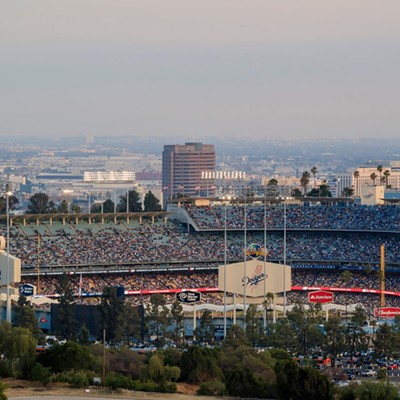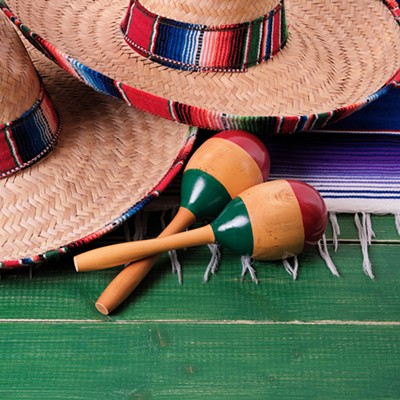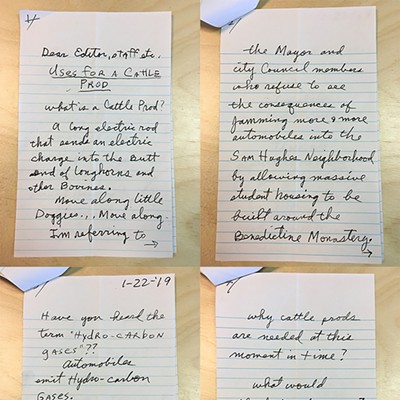Amanda Vega-Ramos was the driving force behind the creation of the new city park that straddles the wash that runs north of C.E. Rose Elementary School, along Columbia and Aviation, between 12th and 16th Avenues. The park brings beauty where once was only ugliness and a sense of community to a neighborhood once beset by fear.
The Rose Neighborhood is bounded by Ajo Way on the north, Irvington on the south, 12th Avenue on the east and I-19 on the west. It is an old neighborhood and probably considered by many to be in a bad part of town. (A couple weeks back, two men were shot as they stood outside a popular pizza place just north of the neighborhood. That same night, right around the corner from the pizza place, a deranged man set fire to his parents' house and resisted firefighters' efforts to remove him from the burning building.)
Nevertheless, it is home to many proud and hard-working families, some of whom have lived in the neighborhood for generations. Amanda Vega-Ramos was born in the neighborhood and learned about community activism firsthand. Her parents, Henry and Alicia Vega, have been active in the neighborhood for four decades.
In the mid-'60s, the couple gathered petitions that led to the first paving of streets and addition of curbs in the neighborhood. Having accomplished that, they then mounted a drive to get a walking bridge built over the arroyo that runs down the center of the neighborhood. Kids heading south to C.E. Rose Elementary or north to Wakefield Middle School, Pueblo High or St. John's Catholic School would have to cross the wash twice daily, often with distasteful and even dangerous consequences.
Monsoon rains would fill the arroyo with knee-high water, and even when it drained down, it would leave behind tall grass and a breeding ground for swarms of mosquitoes. Many a kid saw his one pair of shoes ruined by the muck and would have to spend the day in wet socks that smelled like swamp water.
Thanks to the efforts of the Vegas, a bridge was finally built and is still in use today. Over the years it has provided safe passage to thousands of kids who walk to school. The bridge is now in a serious state of disrepair, but authorities shrug off suggestions that a new bridge be built and simply do infrequent patching jobs on the structure.
Over the years, despite (or perhaps because of) the bridge, the arroyo became a microcosm of all that was wrong with the neighborhood and the city in general. It became a hangout for kids who were ditching school and adults who were ditching life's responsibilities. Drinking and drug use was rampant in the arroyo, and transients would gather and harass the residents and sometimes even expose themselves to the school kids at nearby C.E. Rose.
The arroyo was in bad physical condition, as well. Plagued with smells, stagnant water, and runaway vegetation growth, the area was under the City of Tucson Traffic Maintenance Department and therefore received only annual maintenance. Elderly residents of the neighborhood would walk along the arroyo, but it was neither an aesthetically pleasant nor, for a variety of reasons, a particularly healthy thing to do.
Amanda Vega-Ramos, having watched her father help get the EPA Superfund to clean up the trichloroethylene plume that was responsible for a massive cancer cluster on the South Side and her mother organize several neighborhood fund-raising efforts, decided to do something about the neighborhood where she grew up.
She organized more than 600 families and formed the Rose Neighborhood Association. Serving as president of the Association, she applied for and received a $66,500 grant from the Pima Association of Governments, which seeks to assist in projects that promote bicycle and pedestrian activities. That was a great start, but she soon learned that the projected park along the arroyo, even a stripped-down model would probably cost four times that amount.
Undaunted, she approached the landscape architectural firm Collins Peña (now Tetra Tech) and asked that they volunteer their services. Swept up in her enthusiasm and impressed with her vision, the company agreed and did all the planning for free.
Vega-Ramos then put together a proposal that led to a $150,000 grant from the Pima County Neighborhood Reinvestment organization. With the necessary money in hand, she then began the toughest part of the process--navigating the halls of city and county government.
This past October, after years of dreaming, planning and seeing things through, Amanda Vega-Ramos cut the ribbon on the park she had built for her neighbors. The park, which runs along the arroyo for nearly a half-mile, features ocotillo-style ramadas, bike racks, walking paths, barbecue grills, drinking fountains, dusk-to-dawn lighting, 119 new trees and an irrigation system. She's currently working on a new grant that would provide desert vegetation and additional benches.
One more thing: She has done all this while battling a serious, potentially life-threatening illness.
While residents enjoy the park, Santa Vega-Ramos has moved on to her next project. She's working on the plans to complete a job that she and an army of volunteers began last spring.
The name of the project? Christmas in April.










